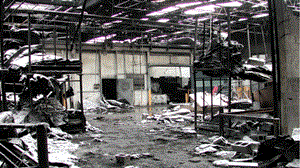Snow, ice and cold weather aren’t the only hazards that are present in winter months. According to the Chemical Safety Board, winter months create an increased risk of combustible dust fires and combustible dust explosions. Former CSB Chairman, John Bresland, explains that, “Low humidity levels in winter can make dust particularly easy to disperse and ignite.” Bresland also points out that seven out of eight catastrophic dust explosions since 1995 occurred in winter months– four of those happened in February alone.
Be sure to take extra care to avoid combustible dust accumulations in your facility, especially on elevated surfaces, control ignition sources, and double check for other risks that could cause a dust explosion or dust fire.
For more information on how you can prevent combustible dust fires and explosions, contact Hughes Environmental at 888-845-3952, or visit www.HughesEnv.com.


